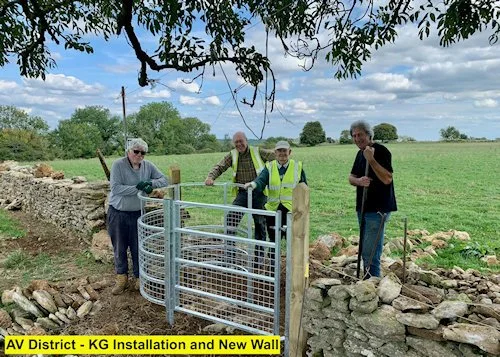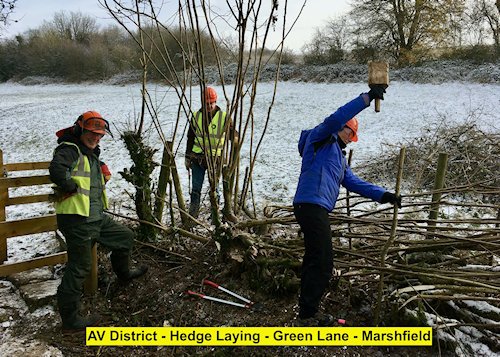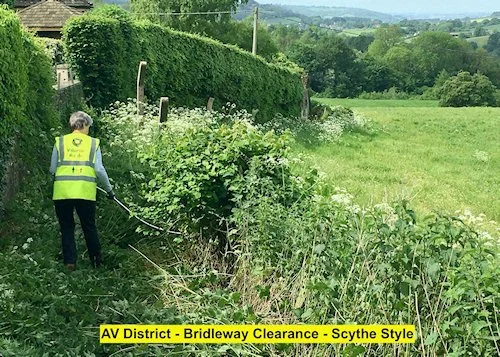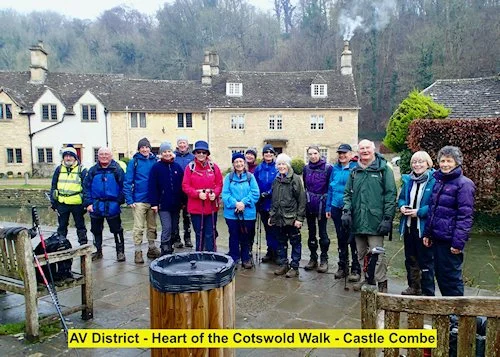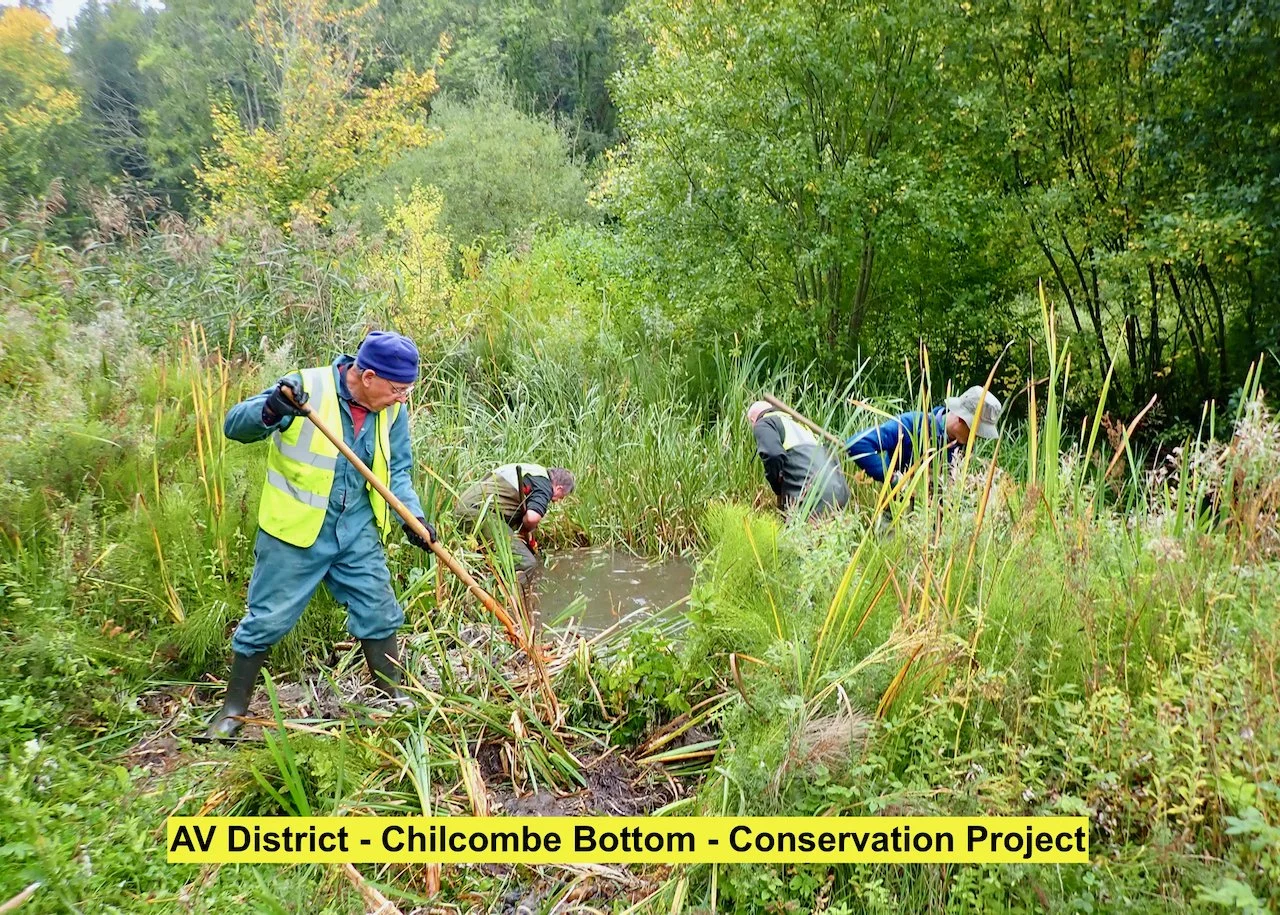Cotswold Wardens
Have you ever wondered who looks after the network of footpaths around the Bath countryside? This work is essential for our access to nature. I met Barry Cox at the annual fete in Batheaston and learnt the secret.
Barry Cox
We're known as the Secret Army of the Cotswolds. It isn't the fairies fixing things, it’s the Cotswold Wardens.
Up until March I was Chairman of Avon Valley Voluntary Wardens. The Avon Valley is one of five districts within the Cotswolds National Landscape (CNL). There are 38 Areas of Outstanding Natural Beauty (AONB) in England. The CNL goes from Chipping Campden in the North all the way to Wellow in the South. It is unique in having the best part of 470 volunteer wardens. The Avon Valley District has 107 of those wardens and we are self-governing. We coordinate ourselves; we look after ourselves and we train ourselves.
On a Wednesday we put out work parties, which will focus predominantly on fixing issues on Public Rights of Way (PRoW) such as footpaths and bridleways. We have a dry-stone walling team out on Tuesdays and Thursdays. We lead guided walks most days of the year.
We also support fetes, like the Batheaston one we are at today. Here, I have another hat on. I'm the Publicity Officer for Avon Valley. So, I promote what we do and encourage people to volunteer. People can volunteer online by visiting the website www.cotswoldsaonb.org.uk.
Barry Cox at the Batheaston Fete
That's how I started. I've been a volunteer for 6 years now. I did 38 years in the Royal Air Force, seven years in industry, then in 2017 I took early retirement and filled that gap in my life with this volunteering. The majority of volunteers in my patch are Forces retirees, because there's a high military presence here. But we do have some people whose firms allow them to have one day a month off to do voluntary work.
Why do I do it? I love the great outdoors. We call it the Green Gym. Unlike a gym, there's no membership fee and we go out and about putting something back into the countryside and our community.
I'm the Parish Warden for Biddestone and Slaughterford. A Parish Warden spends a lot of their time walking the PRoW. There are 31 paths in my patch, a total distance of 25 kilometres. I walk those paths on a regular basis and I go with a machete, bill hook or whatever … and I cut down vegetation. If I come across something I can't fix, I'll raise a defect report that goes into our work party coordinator and we get a gang out to fix it: male and female wardens. I link with my Parish Council and Wiltshire County Council. I also work with the local Ramblers group (www.ramblers.org.uk). Any rambler in my parish can report things and I'll get them fixed.
The repairs are funded in several ways. The surface of the public right of way to two spades down is the responsibility of the County Council. The fixtures on a path, whether it be a stile, a gate, or a kissing gate are the responsibility of the land-owners. If anything goes wrong, the land owners should be fixing those things but that doesn’t always happen. So, the County Councils will provide us with the materials.
In Wiltshire we fix stiles. In BANES or South Gloucester, they'd rather have a stile taken out and something else put in. Over the years we’ve built up trust with the Councils so they know what we do will be good for 10 years. We also get funding through DEFRA. We all keep a diary. Last year, all of those 470 volunteer wardens did just shy of 49,000 hours of work. If you were to charge just £10 an hour that’s a lot of money saved. DEFRA funds the National Landscapes and some of that funding comes down to us. We don't get paid, but we get things like clothing, safety boots, and tools – folding saws and secateurs. You'd be surprised what you can take out with a folding saw and secateurs.
Everybody's trained in first aid. We do a health and safety course that has to be repeated every five years to keep it topped up. When you're out on a work party, you're in the middle of nowhere, so if anything goes wrong you’ve got to be able to deal with it. We also get training for things like operating a brush cutter or a chainsaw. We don't drop big trees, but if trees fall over, we cut them up and take them away. We are also paid for fuel as we travel a lot. Volunteers shouldn’t be left out of pocket.
There are British standards for gates and stiles and the like. If a field has a fence line in it or a wall, and there's only crops on either side there's no reason to have a stile. A stile is there to keep animals from going from one field to another. A lot of land owners don't like us removing stiles and just leaving a gap because that encourages people to cycle. You can never please everybody. It's a fine balance.
At the moment, Access for All is funding projects to remove barriers. That could fund tools for us to do access work or we could come up with stile-free routes. We’ve put a route up on Lansdown for people on trampers (all terrain mobility scooters). We've put in wider gates to allow a tramper to go through.
We very rarely have a work party out on a weekend, because we do guided walks then. We train for that as well. The guided walks are all listed on the website www.cotswoldsaonb.org.uk. They go from easy, to moderate, to challenging. An easy one probably has no stiles and the short distance could be flat. A challenging one has plenty of stiles, goes up and down a couple of hills, and is probably a long distance, maybe 11 miles. All the walks on the website come with a little bit of spiel about what you're going to see, because our walks are informative. We don't just go from A to B, we research the area and tell people what they're seeing. We also lead a walk along the Cotswold Way. The Cotswold Way is 102 miles long and we walk it from North to South. It takes from May in one year to the following February, meeting once a month to walk a section. Everybody meets at Cold Ashton. They get on a bus and are taken to the start at Chipping Campden where they do about 10 miles and are picked up again by the bus. Next month they’re taken to last month’s finish point and walk the next section. Each section is led by a different warden. The walkers, around 25 of them, and the wardens form a bond.
We have other projects. There's one wildflower meadows project. A guy called Harvey Sherwood harvested seeds on Bannerdown and Dyrham Park and places like that. Then we went round asking the landowners to let us seed field margins with wildflowers.
Why is walking important? You need to think back about three years to something called Covid, when we were only allowed out within a mile of our houses and lots of families were out walking. It’s well known that walking is good for mental health, it's good for your physical abilities, it keeps things moving that would seize up if they didn't get used. I walk on average about 50 miles a week because I walk my grandsons to school. I can't ever remember my grandma and granddad walking me to school, but I am giving my grandsons something because, when we walk, we talk about what we see. To me, a walk is to understand your environment. Recharging your battery is unbelievable in a peaceful place such as Chilcombe Bottom. That's what I get out of a walk. I can get a sense of achievement walking out my front door and down into the By Brook valley. I won't see a person in the winter, and I can pop out at Colerne, or Box or any of those places and there'll be a pub where you can meet people and then turn around and go home.
When I lead the guided walks, I talk about what people can't see, like all the quarries under the ground beneath your feet and the history. We’re storytellers. That's what we are.
June 2023
All photos supplied by Barry, except the one of Barry himself.

